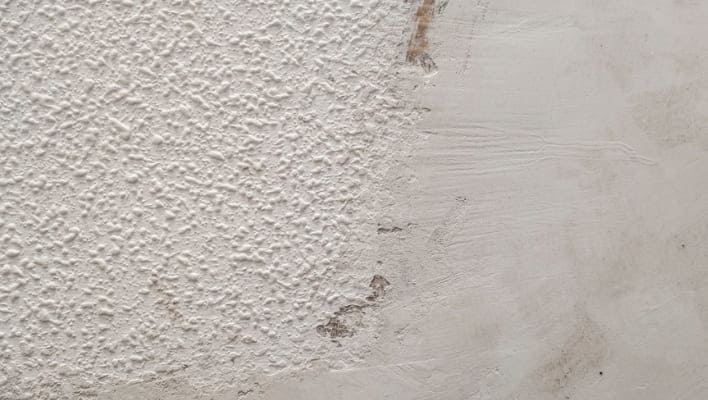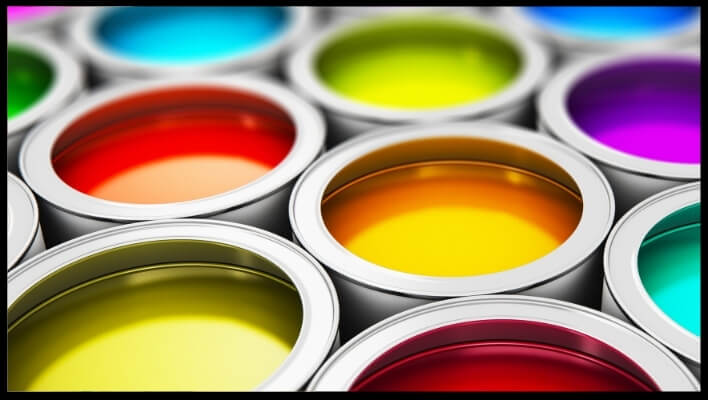Refinishing your living space? The choice between smooth and textured walls can significantly impact the look and feel of your room. It’s not just about personal preference; practicality, the room’s specific needs, application procedure, and and the condition of the existing walls also matter.
In this guide, we’ll explore both options—smooth and textured walls—providing straightforward insights to help you choose the perfect finish for your living space. Stick around as we break down the simplicity of Smooth vs. Textured Walls and find the right fit for your style.
Table of Contents
- Textured Walls
- Benefits of Textured Walls:
- Smooth Walls
- Benefits of Smooth Walls:
- How to Choose the Right Wall Texture for Your Home
- Style
- Lighting
- Budget
- Maintenance
- Easy to clean
- Theme of Your Home
- Money and Time
- DIY or Professional
- how to smooth out a textured wall?
- Scrape Off Texture
- Sand the Surface
- Apply Joint Compound
- First Coat of Mud
- Second Coat of Mud
- Address Dents
- Smooth walls vs textured
- Final Words On Smooth walls vs textured walls
- FAQS
- How much does it cost to smooth textured walls?
- How Much Does It Cost to Skim Coat?
- Q: How to smooth out bumpy walls?
- Q: Are textured walls in style?
- Q: How to retexture walls smooth?
- Q: How to smooth textured walls without sanding?
- Jennifer Marie
Textured Walls
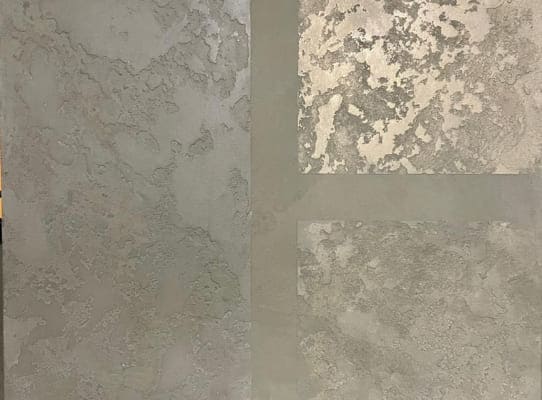
Textured walls add a distinctive touch to any space, offering a spectrum from smooth to rugged surfaces. While they may require a bit more effort to keep clean compared to smooth walls, their ability to introduce depth and character to a room is unmatched. Whether opting for peel-and-stick textures, premixed compounds, or the budget-friendly choice of a paint roller with texture paint, the cost to texture walls and ceilings typically falls between $0.80 to $2.00 per square foot.
For painters, the task involves a thoughtful approach, considering the challenge of working on surfaces with peaks and valleys. Careful tool selection and preparation are key to overcoming hurdles like excessive paint usage and potential splatter. Embracing varied styles, from subtle smooth finishes to pronounced textures like the brick effect and roughcast, textured walls offer a rich palette for artistic expression, ensuring each painted surface tells a unique visual story.
Helpful Resource: Check out the quality paint sprayers for walls to get the smooth finish.
Benefits of Textured Walls:
- Textured finishes serve as effective camouflage for minor flaws or uneven surfaces, offering a practical solution, especially beneficial for older homes.
- The addition of texture to walls introduces depth and visual interest, contributing to a cozier and more intimate atmosphere within a room.
- The vast array of available textures provides ample opportunities for personalization, allowing you to create a distinct ambiance that reflects your unique style and preferences.
| Wall Texture | Description | Examples |
| Level 5 | Entirely smooth, high-end look, expensive, requires skill and labor, suitable for high-gloss paints, ultra-matte paints, or wallpaper. | Smooth finish, minimal texture. |
| Level 4 | Expensive, fewer skim coats than Level 5, subtle texture for light and shadow play, perfect for flat paints. | Smooth with a slight variation. |
| Level 3 | Common, durable, style-neutral, affordable, light but noticeable texture, hides wall imperfections well, easy to paint. | Orange peel texture, popular and versatile. |
| Level 2 | Exhibits a style-specific feel, resembling rough plaster or stucco. Suited for Southwestern or Mission-style homes, effectively concealing imperfections but challenging to paint. | Monterey drag, knockdown, rougher feel. |
| Level 1 | Features various plaster patterns, not very common, seen in older homes, heavy textures, challenging to paint and repair. | Popcorn, sand swirl, comb, slap brush finishes, add depth and character. |
My Experience:
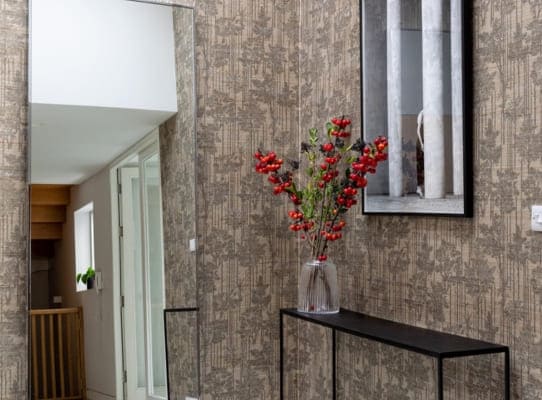
I was in the process of installing textured wallpaper for a client project, reflecting on past instances where I incorporated this design element. I appreciate the way texture enhances walls, introducing a touch of luxury and a tactile quality to the overall aesthetic.
Textured Wallpaper In My Bedroom
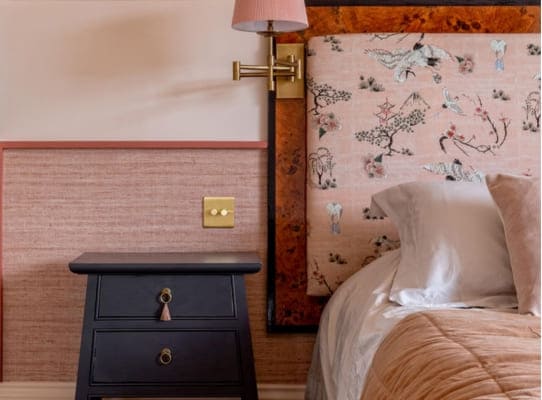
Smooth Walls
Smooth walls finish provides a classic and elegant appearance that complements various styles effectively. To make them flawless, you need to do careful prep work like sanding and fixing any imperfections. Their proficiency in reflecting light evenly imparts a sense of openness and airiness to rooms.
If you want a super smooth finish like Levels 5 or 4, it can cost more because it needs a lot of work, and any imperfections in the wall will show. For a more budget-friendly option, Level 3 gives a nice texture while hiding small flaws.
Fixing textured walls can cost $1 to $3 per square foot, depending on whether you’re removing the old texture or covering it with a skim coat. If the texture was never painted, you can spray water to soften it and then scrape it off for a smooth look.
Benefits of Smooth Walls:
- Smooth walls seamlessly integrate into diverse design styles, spanning from modern and minimalist to traditional and classic.
- Keeping smooth walls clean is effortless, making them an ideal option for areas with high foot traffic.
- The uniform reflection of light on these surfaces enhances the overall brightness, fostering a welcoming and inviting atmosphere
How to Choose the Right Wall Texture for Your Home

Choosing the right wall texture for your home is important, and you can do it in a few simple steps;
Style
Your personal style and how you want your home to feel are really important. If you like a modern look, smooth walls fit well. They give a clean and polished feel, great for a modern style. On the other hand, if you prefer a more creative and free-spirited vibe, textured walls can be a fun choice. They provide a canvas for expressing your creativity, especially if you’re going for a bohemian feel.
Lighting
Before you make your final decision, take a moment to consider the lighting in your space – both natural and artificial. Lighting plays a significant role in showcasing wall textures and adding dimension to your room.
For instance, if you have downcast light from a wall sconce, it can highlight the shadows in a Level 2 knockdown finish. On the contrary, in a well-lit room with abundant natural light, the wall texture may be less prominent.
In smaller rooms or areas with limited natural light, selecting smooth walls can give the impression of more space and enhance brightness. Meanwhile, textured walls can infuse a sense of coziness and character, making them a fitting choice for larger rooms. So, as you weigh your options, take into account how lighting will interact with your chosen wall finish, shaping the overall ambiance of your living space.
Budget
Take your budget into consideration when deciding between smooth walls and textured walls. Smoother finishes, such as Levels 5 and 4, are often pricier because they require more labor. Achieving a flawless Level 5 finish demands a nearly perfect drywall surface since there is minimal texture to hide imperfections. On the flip side, Level 3 provides a cost-effective option, effectively concealing flaws while maintaining a subtle texture.
Also, factor in both your budget and the time available for the project. Achieving a seamless smooth finish might involve more preparation and labor, making it a more time-intensive process. In contrast, textured walls can be a quicker solution, especially if you’re considering a DIY project
Maintenance
It is important when deciding between smooth and textured walls. Smooth walls typically offer easier cleaning and upkeep, making them a practical choice for areas prone to dirt or requiring frequent cleaning.Conversely, textured walls might require extra care during cleaning due to their intricate surfaces.
Easy to clean
Smooth walls are easy to clean, which is good for busy areas. Textured walls might need more work to keep them tidy.
Theme of Your Home
Think about the overall theme of your home. Choose a wall texture that goes well with your theme and colors to keep everything looking good together.
Money and Time
See how much money and time you have. Smooth walls might take more time and preparation. Textured walls could be quicker and cost less.
DIY or Professional
Choose whether you’d like to handle it on your own or seek assistance. Some textures are easier for beginners. If you want it perfect, getting professionals might be a good idea.
how to smooth out a textured wall?
To get that smooth finish on textured walls, I go for the most effective method – skim coating. It’s a simple and budget-friendly process. Here’s how I do it:
Scrape Off Texture
Use a blade to scrape off as much texture as possible from the surface.
Sand the Surface
Wear a mask and sand the surface using 80-grit sandpaper on a sand pole or a radius sander.
Apply Joint Compound
Use a blade or magic trowel to apply an all-purpose joint compound, especially on peaks that may require extra attention.
First Coat of Mud
Allow the first coat of mud to dry, then sand it down with 120-grit sandpaper, aiming for a smooth finish. Remove dust with a slightly damp cloth.
Second Coat of Mud
Apply a second coat of mud and, once dry, sand it again, this time using 220-grit sandpaper.
Address Dents
If there are any dents, fill them with a small amount of tinted putty. Smooth it with a blade and lightly sand using a mild sanding sponge once dry.
Smooth walls vs textured
Choosing between smooth or textured walls depends on the desired aesthetic and room function. Smooth walls, with a Level 4 or 5 finish, offer a clean, minimalist look, ideal for a modern aesthetic and accommodating wall coverings.
Textured walls, on the other hand, add depth and work well as contrast walls, but may not be suitable for high-traffic areas. In new construction, starting with a smooth wall provides a versatile canvas for modern design elements. The choice boils down to the specific goals of the design and the intended function of the space.
Final Words On Smooth walls vs textured walls
Ultimately, the decision between smooth and textured walls is a matter of your personal taste, the style of your home, and practical considerations.
Smooth walls offer a classic, timeless and elegant look, ideal for a clean and minimalist aesthetic, while textured walls provide an opportunity for creativity and a more personalized touch. I hope the info on Smooth vs. Textured Walls helps you pick what suits your style and needs best.
FAQS
How much does it cost to smooth textured walls?
Smoothing textured walls costs $1 to $3 per square foot. The cost to smooth textured walls depends on whether the old texture is removed or covered by a skim coat. Wall texture that has never been painted can be sprayed with water to soften and then scraped off until smooth.
How Much Does It Cost to Skim Coat?
Skim coating drywall comes with a price range of $1.10 to $1.30 per square foot, with the majority of the costs allocated to labor. This project requires precision, practice, and the use of top-notch tools. It’s recommended to enlist the expertise of an experienced contractor due to the intricacies involved in achieving a smooth skim coat for optimal results in a home improvement setting.
Q: How to smooth out bumpy walls?
To achieve smoother walls, follow these steps:
- Examine the walls for loose paint, wallpaper, or texture that needs removal.
- Remove any loose material and fill holes or cracks using spackle or joint compound.
- Utilize fine-grit sandpaper to smooth the walls, concentrating on problem areas.
- Add a primer coat to create a smooth base for paint or texture.
- Apply a thin layer of joint compound (skim coat) to even the surface. Lightly sand after drying.
- Once smooth, paint for a sleek finish or apply a textured coating for a stylish look.
Q: Are textured walls in style?
Yes, textured walls are frequently considered fashionable, contributing depth and character to a space. Trends may vary, and personal preferences play a significant role. Popular textured options include faux finishes, textured wallpaper accent walls, or textured paint techniques. Choose a texture that complements your design.
Q: How to retexture walls smooth?
To retexture walls for a smooth finish, consider these steps:
- Remove dirt, grease, or debris from the walls.
- Repair holes or cracks by filling them with spackle or joint compound, followed by smoothing the surface through sanding.
- Use a high-quality primer for a proper bond between the wall and the new texture.
- Select texture like light orange peel or subtle stipple.
- Use a roller or sprayer to apply texture evenly.
- While wet, smooth the texture with a trowel or large brush for a refined look.
- Let walls dry completely before applying paint or finishes.
Q: How to smooth textured walls without sanding?
A: To avoid sanding, use this alternative method to smooth textured walls:
- Remove dust and dirt with a mild cleanser.
- Use joint compound as a skim coat over the textured surface.
- Spread the joint compound with a trowel, smoothing the texture. Work in small sections.
- Feather the edges of the skim coat to blend with the existing texture.
- Ensure the skim coat dries thoroughly, and this process may require a day or more.
- Once satisfied, proceed to paint or add desired finishes.

Jennifer Marie
Jennifer Marie is a general contractor with over the years of experience in home remodeling, DIY projects, and commercial painting projects. Her experience includes working with paint sprayers, painting tools, and other painting supplies. You can follow her on Facebook.

